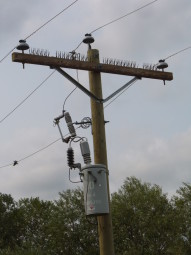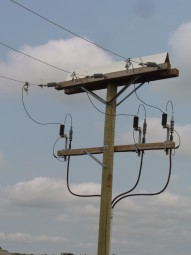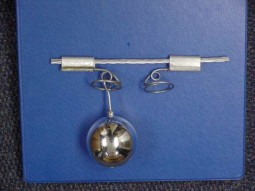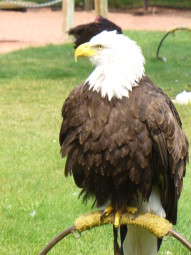Birds nest in the strangest places – like the robin that built its nest in our canoe once, and the dove that decided to nest on my parents’ front door. Yup, right on the front door. Ospreys, though, often choose very dangerous places to nest, like the tops of power poles, stadium lights, or even tall buildings downtown.
Power poles are attractive nesting sites, but can be deadly with high voltage lines buzzing below. Electricity providers recognize two problems here: stray bits of nest can cause power outages for customers, and contact with the lines can kill the birds. This is  what sparked (pardon the pun) the idea for my first chapter book, Ospreys in Danger. An osprey nest in Waterton Lakes National Park really did cause the entire town to lose power in 1977. Unlike the ospreys in my book, those birds died.
what sparked (pardon the pun) the idea for my first chapter book, Ospreys in Danger. An osprey nest in Waterton Lakes National Park really did cause the entire town to lose power in 1977. Unlike the ospreys in my book, those birds died.
Now, power companies have developed a few ways to improve bird safety.

Anti-perching spikes

Anti-nesting device
Anti-perching spikes and anti-nesting devices discourage birds from taking up residence on a power pole.
Providing a nesting platform nearby entices birds, like ospreys, away from danger. Increasing the length of the pole’s cross arms from 2.1 to 2.7 metres gives big birds more space from the lines if they insist on perching on the pole. An osprey’s wingspan is more than 1.5 metres, large enough to contact two power lines, completing the circuit and causing a nasty, possibly deadly, shock. In high-risk areas, casings around insulators and cables reduce the risk of electrocution.
Collisions with power lines can also be deadly, especially for large-bodied birds that aren’t nimble enough to make quick avoidance manoeuvers. Migration is dangerous for ducks, geese, swans, and raptors – including ospreys – as they navigate flyways littered with power lines.
This isn’t just a North American problem. In Hungary, an estimate of 30,000 bird fatalities from contact with electric poles and power lines (2000) prodded energy providers into action. An insulating plastic cover appears to be very effective in lowering this number.

Reflective bird diverter used in South Africa
In South Africa, the annual mortality rate of Blue Cranes (estimated at 150 per year) prompted power providers to develop several anti-collision devices, including a stainless steel sphere that attaches to the power line. The device is small (70 mm) but highly reflective, visible at low light during dawn and dusk, and from all directions.
Here in Alberta, curly bird diverters and coloured flappers make power lines easier for birds to see.
Have a look around your city. Has your power provider taken steps to improve safety for birds? And if you’re on the road in southern Alberta, consider stopping in at the Alberta Birds of Prey Centre in Coaldale, Alberta.

Lincoln is a permanent resident at the Albert Birds of Prey Centre in Coaldale.
A regional electricity provider, FortisAlberta, has partnered with the Centre in several ways, including an interpretive trail of power poles where I took the above photos. They’ve also helped create the FortisAlberta Flying Field and amphitheatre, and provide support for the rescue of injured wildlife.
It’s a great place to learn about some magnificent birds of

Up close and personal with a burrowing owl.
prey – and to make a personal connection with nature.
